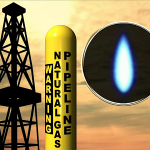 The U.S. Forest Service says it has amended its Land and Resource Management plan to permit the Mountain Valley Pipeline through the Jefferson National Forest. The proposed natural gas pipeline would cross about three-and-a-half miles of National Forest land. The action is a necessary step for the MVP project to run across National Forest Service property.
The U.S. Forest Service says it has amended its Land and Resource Management plan to permit the Mountain Valley Pipeline through the Jefferson National Forest. The proposed natural gas pipeline would cross about three-and-a-half miles of National Forest land. The action is a necessary step for the MVP project to run across National Forest Service property.
From the US Forest Service: (December 1, 2017) Roanoke, Virginia – Today, the USDA Forest Service issued a Record of Decision (ROD) to amend the Jefferson National Forest Land and Resource Management Plan (Forest Plan) to allow for the Mountain Valley Pipeline (MVP Project). The Forest Service’s ROD modifies certain standards in the Forest Plan to accommodate the pipeline construction and requires measures to minimize environmental impacts. The agency will also provide a letter of concurrence for the MVP Project to the Bureau of Land Management (BLM). The BLM is responsible for approving pipelines that cross federal lands under the jurisdiction of two or more federal agencies, but must have the concurrence of the involved agencies. These actions are necessary steps in order for the MVP Project to be built on National Forest System lands. “Our decision supports U.S. Forest Service efforts to provide for multiple uses, minimize impacts to natural resources, and to implement federal policies that encourage energy infrastructure, jobs, and economic growth,” said Forest Supervisor, Joby Timm. The MVP Project will traverse a total of 303 miles to deliver natural gas produced in the Appalachian Basin to markets in the Northeast, Mid-Atlantic, and Southeastern United States. The MVP Project will cross 3.6 miles of the Jefferson National Forest in Monroe County, West Virginia and Giles and Montgomery counties in Virginia. The MVP Project will impact about 83 acres of the Forest during construction and after restoration, will require about 42 acres for long term operation. The operational corridor for the pipeline will be 50 feet wide. The pipeline route on the Forest will also cross the Appalachian National Scenic Trail and the Brush Mountain Inventoried Roadless Area.



